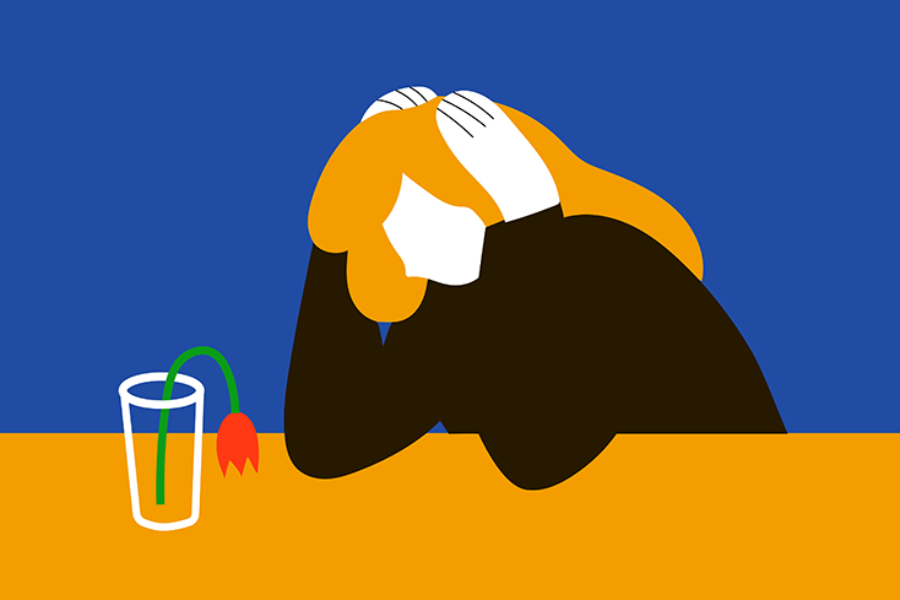Over the last few years, those of us seeking inpatient mental health treatment have been confronted with a crisis: a lack of beds in mental health treatment facilities. The consequences, frankly, are disastrous. I personally experienced the impact of this shortage. I had been struggling with depression, anxiety and an eating disorder for several years, but none of my symptoms escalated to the point of hospitalization until midway through the pandemic, when it became clear that I needed immediate help.
I live in Massachusetts, where I am lucky to have many exceptional treatment centers and hospitals. Yet, even while living there, it was difficult to find available space in any of the treatment centers — especially the ones that specialize in the care I needed.
I am only 16 years old, and I have been in hospitals for nine out of the last 12 months. Unfortunately, many teenagers I know have struggled immensely over the past few years, but they have not been able to access adequate help. Treatment facilities have closed, staff have quit and the number of beds has decreased. Ultimately, it has been difficult for anybody to find a space anywhere. This is an unprecedented crisis in mental health facilities — and it needs to be addressed.
Waiting For A Space Made My Symptoms Worse
After exhibiting severe changes in my mood, I was hospitalized for the first time. Weeks into my inpatient treatment, the symptoms of my eating disorder became evident. The hospital I was in, however, did not treat eating disorders, so I was left waiting for a bed at a facility that could treat all my symptoms.
While the comorbidity of mood disorders and eating disorders is common, many treatment facilities are not equipped to treat the two conditions together. So, I was stuck in inpatient treatment for a mood disorder for three months — waiting for a bed at any residential treatment center in the country that could accommodate my needs for eating disorder treatment. Leaving my eating disorder untreated for so long caused my symptoms to escalate; I was sent out to a medical hospital for the damage done to my body. This transfer prolonged my wait for the right residential treatment center, even though I needed help more than ever.
Finally, I got a bed at a residential facility. It was the only one I could get into quickly. This treatment center was less than ideal — it was brand new, the staff were inexperienced and it was thousands of miles from home — but I had to make it work if I ever wanted to get better. Unfortunately, the facility did not give me the treatment I needed. So, again, I was sent to a medical hospital.
I Had “Too Many Problems” To Treat
Eventually, I was placed on a waitlist for a place near home that provided all levels of care available. I only needed to be in residential care, which is less acute than inpatient care, but the fastest way to get any help was to begin with inpatient treatment. The plan was for me to “level down” to residential care over time. I found myself having to wait yet again; for three more weeks I stayed in that hospital, miles away from home.
Once I was transferred to that treatment facility, I was able to get some of the care I needed. I did have to go to a medical hospital again, but eventually I made enough progress to return home (after being away for about six months straight). I was happy to be home, and I managed to stay there for five months. However, my symptoms returned, and I was hospitalized again. I was, again, placed on a waitlist for the only treatment facility in the state that could accommodate my needs. And again, a waiting period caused my eating disorder to get worse.
I was in the medical hospital waiting to get transferred, with little to no psychiatric treatment, for over a month. The psych unit at the hospital even refused to accept me for some time — because I was struggling with too many problems, which should have signified how much I needed help.
Something Needs To Change
My story is just one example of how the mental health system became strained during the pandemic. The lack of appropriate staffing and space left patients waiting for beds for far too long. This prevented me, and many others, from getting the help I needed. Although I got this support and treatment I needed eventually, the process was prolonged, which had a significant impact on my mental health.
I often felt like I ended up with more symptoms than I started with, largely due to the long wait times I experienced. A lot of my struggles (and the struggles of many others) could have been prevented or lessened by immediate treatment and therapy. This early intervention is crucial. However, we were left waiting for days and months on end for a bed in a psychiatric facility.
This is not how our country should be. Youth and young adults need to be living their lives to the fullest, not cycling in and out of hospitals and waiting for months to get the treatment they need. We need more residential psychiatric facilities to open. We need more experienced staff working in these facilities. We need hospitals to equip themselves to treat mood and eating disorders together. And we need more space available — there are simply not enough beds to accommodate the existing need.
Everyone deserves to have access to treatment so they can successfully recover. The system needs to change to better serve people in the future.
Molly is a 16-year-old girl from Massachusetts. She has struggled with several mental health issues for the past few years but is actively working to recover. She has been in and out of hospitals but finally may be home for good.




